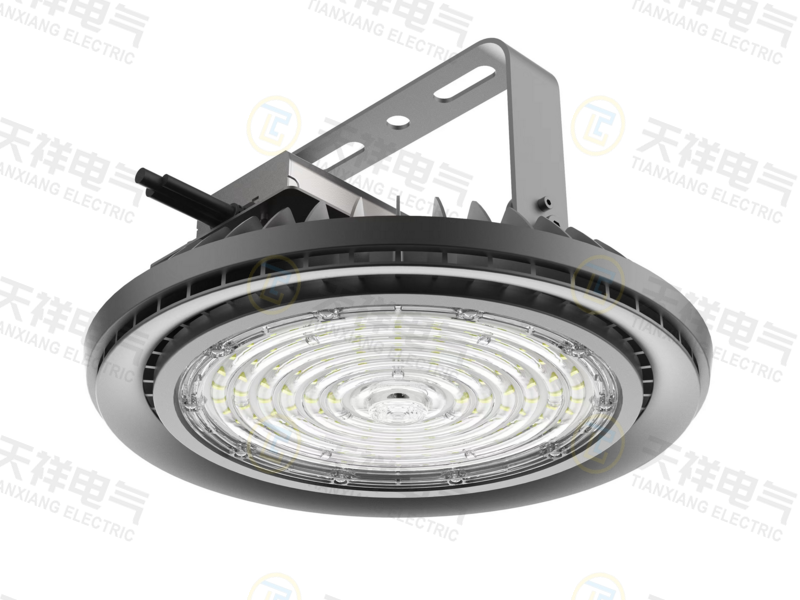High bay lights are a popular lighting solution for high ceiling spaces such as warehouses, factories and stadiums. These powerful lights are designed to provide ample lighting for large open areas, making them an important part of industrial and commercial lighting systems. Understanding how a high bay light works is crucial to ensuring its optimal performance and energy efficiency.
Working principle of high bay lights
High bay lights are typically powered by high intensity discharge (HID) lamps or light emitting diodes (LEDs). The working principle of these lamps involves converting electrical energy into visible light through different mechanisms.
LED high bay lights, work on the principle of electroluminescence. When current passes through the semiconductor material within the LED chip, photons are released, thereby emitting light. The process is efficient and generates very little heat, making LED high bay lights a popular choice for energy-efficient lighting solutions.
Key components
1. LED chip (LED light):
LED industrial and mining lamps are composed of multiple LED chips. When current passes through, the LED chips will emit light. The chips are mounted on a heat sink to dissipate the heat generated during operation.
2. Reflector:
High bay lights are equipped with reflectors that can effectively guide and distribute light output. Reflector design and materials play an important role in controlling light distribution and minimizing glare.
3. Housing:
The housing of a high bay light is designed to protect internal components from environmental factors and provide thermal management for effective heat dissipation.
Working environment
The working environment of a high bay light can also affect its performance and efficiency. Factors such as ambient temperature, humidity, and airflow can affect the operation of high bay lights. These environmental factors must be considered when selecting and installing high bay lights to ensure optimal performance and longevity.
Light control mechanism
In addition to basic working principles, high bay lights often employ advanced control mechanisms to enhance their functionality and energy efficiency. Some common light control mechanisms include:
1. Dimming:
Industrial and mining lamps can be equipped with a dimming function to adjust the light output according to the specific lighting requirements of the space. This feature saves energy and customizes lighting levels.
2. Motion Sensors:
Motion sensors can be integrated with high bay lights to detect occupancy and automatically turn the lights on or off. This not only improves energy efficiency, but also improves safety and convenience in industrial and commercial environments.
3. Daylight harvesting:
High bay lights can be equipped with daylight harvesting sensors to adjust their light output based on the natural daylight available in the space. This intelligent control mechanism helps optimize energy use and reduce reliance on artificial lighting during the day.
Energy efficiency
Understanding how your high bay lights work is crucial to maximizing their energy efficiency. LED high bay lights, in particular, are known for their high efficiency and long life. By converting a higher proportion of electrical energy into visible light and generating minimal heat, LED high bay lights can provide significant energy savings compared to traditional HID lights.
In addition, advanced control mechanisms integrated into high bay lights, such as dimming and motion sensors, optimize light output based on actual usage patterns and environmental conditions, resulting in further energy savings.
In conclusion
High bay lights play a vital role in providing adequate lighting for spaces with high ceilings, and understanding how they work is critical to selecting, installing, and maintaining these lighting solutions. By considering key components, work environment, light control mechanisms and energy efficiency, businesses can make informed decisions to ensure optimal performance and cost-effectiveness of their high bay lighting systems.
If you are interested in this article, please contact high bay lights supplier Tianxiang to read more.
Post time: Jul-30-2024





